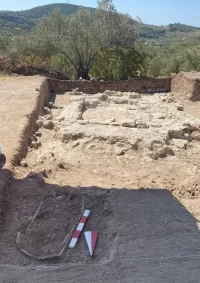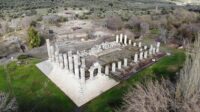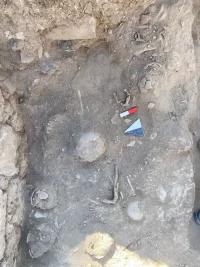
Smintheus has been interpreted to mean “Lord of Mice,” an epithet for Apollo first recorded by Homer in Book I of The Iliad, although the root of the word is not Greek and Homer never explains its meaning. Before the Trojan War even starts, Agamemnon, king of Mycenae, sacks the city of Chryse, kidnapping Chryseis, daughter of Chryses, priest of Apollo at the city’s sanctuary. When Agamemnon spurns Chryses offer a rich ransom for the return of his daughter and throws in some insults to the god he represents while he’s at it, the priest prays to Apollo, addressing him as “O, Sminthian,” and asks him to send a plague to punish the Greeks for their offenses. Apollo is glad to help.


Excavations have been carried out regularly at the temple site since 1980. This year’s dig season (June 15th-October 1st) uncovered the remains of two tombs and the foundations of several buildings.
Hüseyin Yaman, a member of the excavation team said: “We aim not only to acquire information about the burial traditions of individuals and communities that once existed here but also to contribute to the delineation of the distribution area of sacred structures, or in other words, to determine the boundaries of the sacred area. In line with this goal, in the excavations conducted at three different points, we revealed remnants of two tombs alongside foundational remains of some structures. Based on the artifacts found in the only room that seemed to have survived with intact foundations in the monumental tomb, we estimate its origin to be approximately 2,000 years ago, around the first century A.D.”
* This article was originally published here








No comments:
Post a Comment